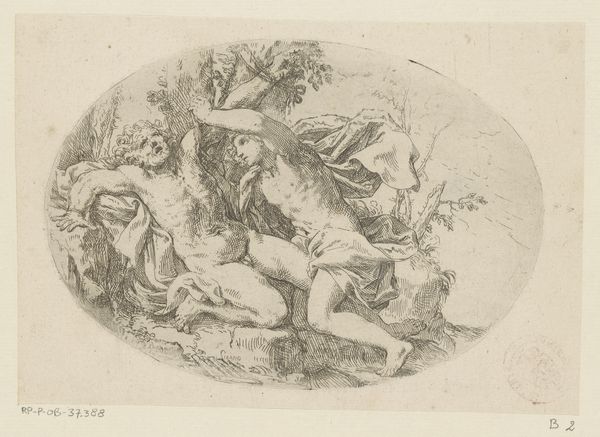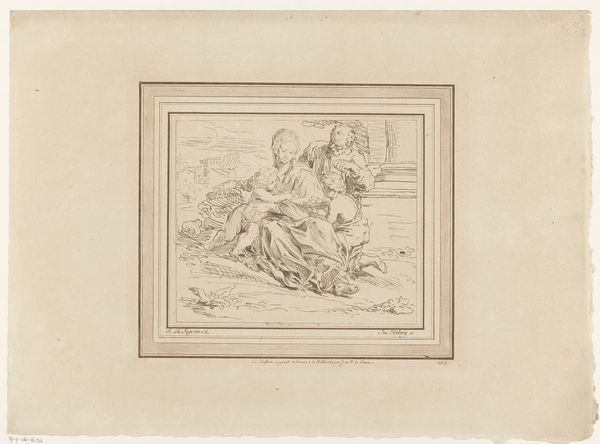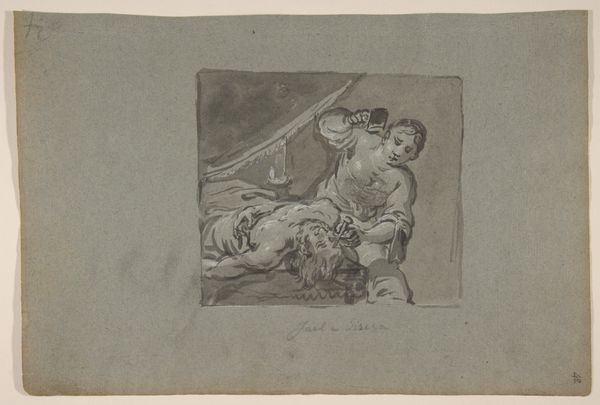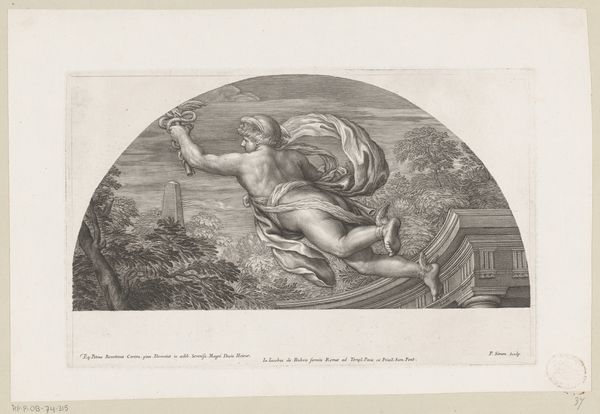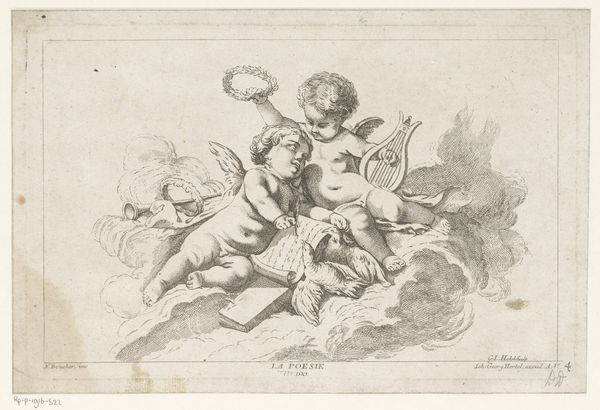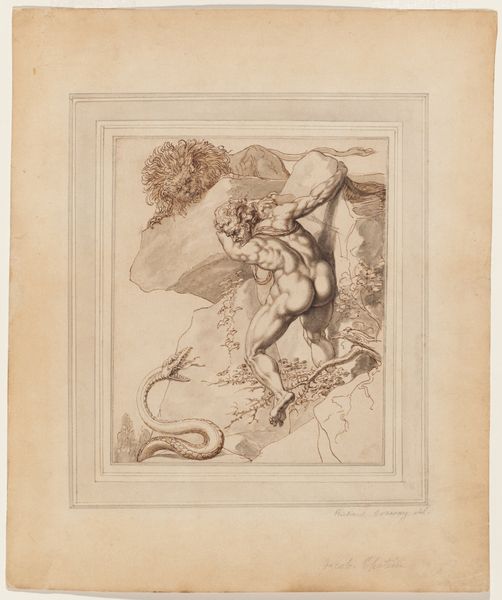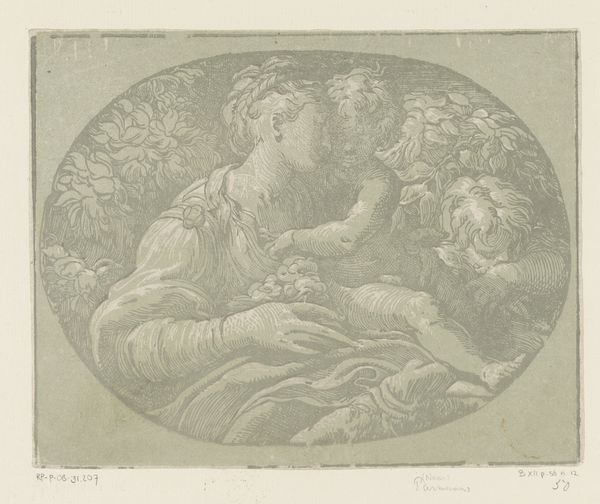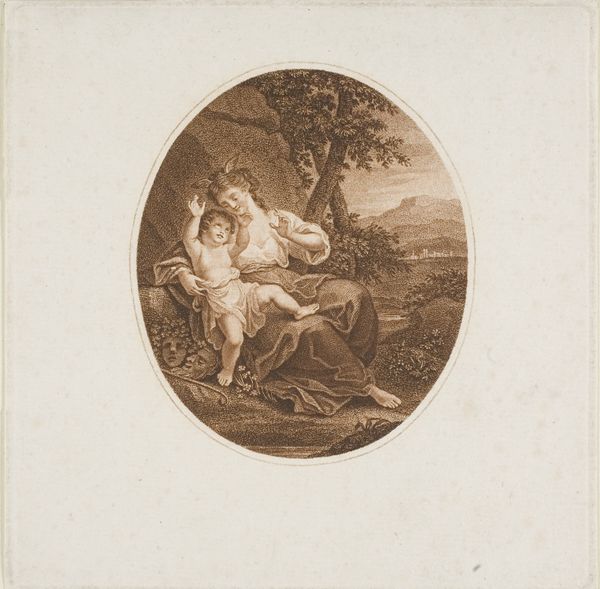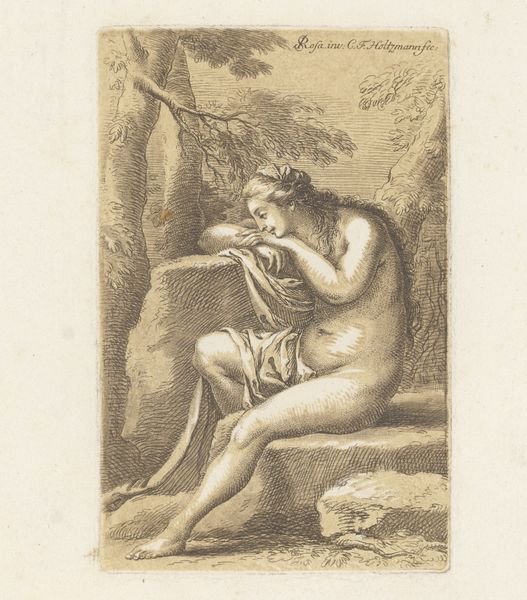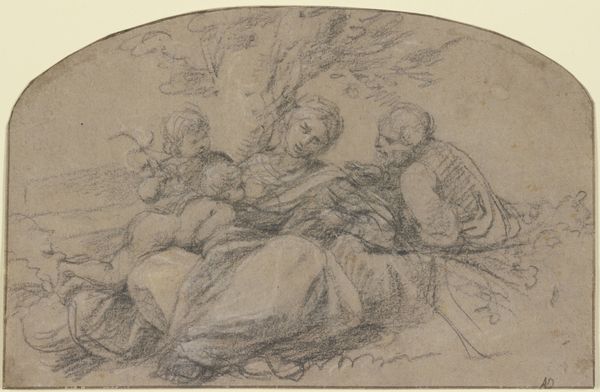
drawing, print, engraving
#
drawing
#
allegory
#
neoclassicism
# print
#
figuration
#
history-painting
#
engraving
Dimensions: Plate: 7 13/16 × 10 in. (19.8 × 25.4 cm) Sheet: 9 1/4 × 11 3/8 in. (23.5 × 28.9 cm)
Copyright: Public Domain
This engraving by Francesco Bartolozzi, now at the Met, allegorically represents Air through classical figures. The winged woman embodies the airy element, a familiar trope in art history for representing the forces of nature. Note how the peacock, cradled by a cherubic figure, further enriches this representation. The peacock, long associated with Juno, Queen of the Gods, symbolizes vanity and pride but also immortality due to the supposed incorruptibility of its flesh. The image invokes Botticelli's "Birth of Venus," where a goddess emerges, propelled by wind deities. Bartolozzi taps into this collective memory, creating a sense of awe and timelessness. The reclining pose of the figure, a motif seen in classical sculptures of reclining gods, further emphasizes the Air's sublime dominion. Consider how such symbols evolve. The peacock, once purely divine, becomes associated with earthly vanity. This reflects our changing relationship with nature, from reverence to a more complex and often self-centered interaction. Bartolozzi's "Air" reminds us that symbols are never static. They constantly transform, reflecting the shifting tides of human consciousness.
Comments
No comments
Be the first to comment and join the conversation on the ultimate creative platform.

